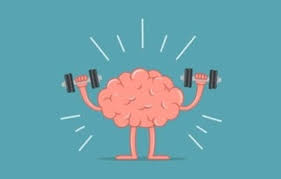Migraines, characterized by severe headaches and sensitivity to light and sound, can disrupt daily life. Ayurvedic tips for managing migraines offer profound insights into the causes, symptoms, and management of migraines. Ancient. Ancient Ayurvedic texts like Charaka Samhita and Sushruta Samhita describe migraines as Ardhavabhedaka, emphasizing holistic approaches to address the root causes.
Understanding Migraines in Ayurveda
According to Ayurveda, migraines arise due to an imbalance in the doshas, particularly Vata and Pitta. This imbalance affects the blood vessels and nervous system, leading to the symptoms of migraines. The Ayurvedic perspective goes beyond just relieving pain and focuses on restoring balance to prevent recurrence. Learn more about the three doshas and how they affect your health in our Dosha Guide.
Causes of Migraines in Ayurveda
- Imbalanced Doshas:
- Aggravated Vata can lead to intense, throbbing headaches.
- Aggravated Pitta results in burning sensations and sensitivity.
- Dietary Triggers:
- Consuming excessively spicy, fermented, or processed foods.
- Irregular eating patterns or skipping meals.
- Stress and Emotional Strain:
- Mental overexertion and suppressed emotions disturb Vata.
- Lifestyle Factors:
- Sleep disturbances or irregular schedules.
- Overexposure to screens and bright lights.
- Environmental Changes:
- Seasonal changes or extreme temperatures can provoke Pitta.
Symptoms of Migraines
- Severe, one-sided headache (can shift sides).
- Sensitivity to light, sound, and smells.
- Nausea or vomiting.
- Visual disturbances or aura before the headache.
- Fatigue and irritability.
Ayurvedic Remedies for Managing Migraines
1. Dietary Modifications
- Avoid trigger foods like fermented items and excess caffeine.
- Include cooling and hydrating foods, such as cucumber, coconut water, and ghee.
- Eat at regular intervals to stabilize Vata.
2. Herbal Remedies
- Brahmi: Enhances cognitive function and reduces stress.
- Ashwagandha: Balances Vata and promotes relaxation.
- Guduchi: A potent anti-inflammatory herb.
- Shankhpushpi: Calms the mind and improves sleep.
3. Panchakarma Therapy
- Nasya: Herbal oils administered through the nostrils cleanse toxins and calm the mind.
- Shirodhara: Warm herbal oil poured on the forehead relaxes the nervous system.
4. Daily Practices
- Head Massage: Use oils like Brahmi or coconut oil to soothe nerves.
- Yoga:
- Practice poses like Child’s Pose (Balasana) and Corpse Pose (Shavasana).
- Pranayama (Breathing Exercises):
- Anulom Vilom (alternate nostril breathing) balances Vata.
5. Maintain a Sleep Schedule
- Sleep early and wake up with the sunrise.
- Avoid using screens before bedtime to calm Vata.
6. Hydration and Detoxification
- Drink lukewarm water with a pinch of turmeric in the morning to detoxify.
- Avoid dehydration by sipping water throughout the day.
Preventing Migraines the Ayurvedic Way
- Follow a Balanced Diet: Tailor your meals according to your dosha.
- Regular Exercise: Engage in moderate activities like walking or yoga.
- Stress Management: Practice mindfulness and self-care.
- Avoid Overexertion: Know your limits to prevent mental and physical strain.
Incorporating Ayurvedic tips for managing migraines into your daily routine can help alleviate the intensity and frequency of migraines, focusing on a holistic approach to health. By addressing root causes such as imbalances in the doshas and promoting lifestyle changes, Ayurveda provides long-term relief and well-being. Remember, if your migraine symptoms persist, it’s important to consult an Ayurvedic practitioner for personalized guidance.
For more detailed research on Ayurveda’s approach to migraines, you can visit this research article on Ayurvedic treatments for migraines.


